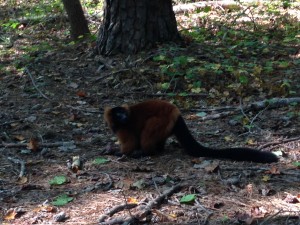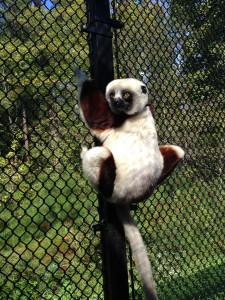When I first visited Duke to scope out housing options and explore Durham, I noticed a strange collection of items in the university bookstore. If you’ve ever been there, you may have noticed the strange phenomenon as well.
Which of the following does not belong?
1. University apparel
2. Textbooks
3. Spirit gear, like those awesome light-up Blue Devil horns
4. Lemurs
5. Duke mugs, water bottles, and shot glasses
I’d like the answer to be “textbooks” because I’d really like to not have to buy them. But the answer is, in fact, “lemurs.”
(Please note that I only mean that there are t-shirts, stuffed animals, and gift items depicting lemurs; the lemurs are not actually for sale. They are priceless and magnificent and would probably tear up your house if you tried to keep one for a pet.)
I know that this blog is loosely water-themed, but another very important topic of conversation in my life is the lemur.
The Duke Lemur Center, situated only about 3 minutes away from campus in the Duke Forest, houses the largest population of lemurs outside of Madagascar. It is a magical oasis of Madagascan paradise (which just means it’s a nice spot in Duke Forest that happens to have some lemurs in it) where I get to spend some of my time.
Soon after moving to Durham last summer, I became a tour guide at the Lemur Center. It’s my job to help introduce people to a sample of the 250 individuals (18 species) housed there.
Essentially, I get to hang out with a bunch of happy lemurs and talk about the Lemur Center’s research and conservation efforts. The days of the week that I spend at Duke Lemur Center are definitely highlights of my week. I invite everyone to come visit us and meet these fantastic prosimian primates.
Without further ado, I’d like to introduce you to the Duke Lemur Center with five happy pictures of five happy lemurs.
1. Red ruffed lemur

2. Coquerel’s sifaka

3. Red ruffed lemur in a tree!

4. Ring-tailed lemur

5. Close-up on a coquerel’s sifaka

Thanks for viewing! Make sure to check out the Duke Lemur Center blog.
